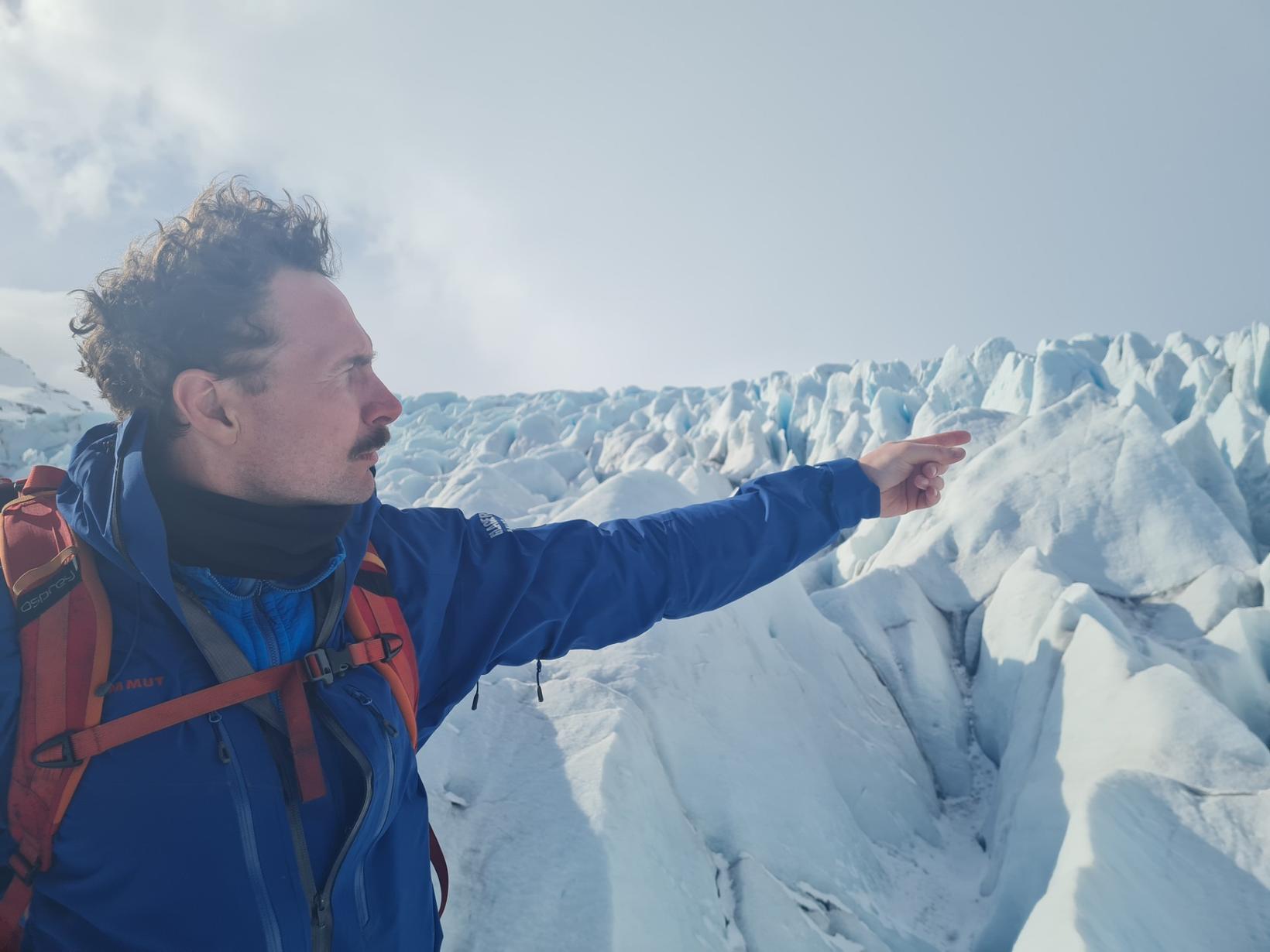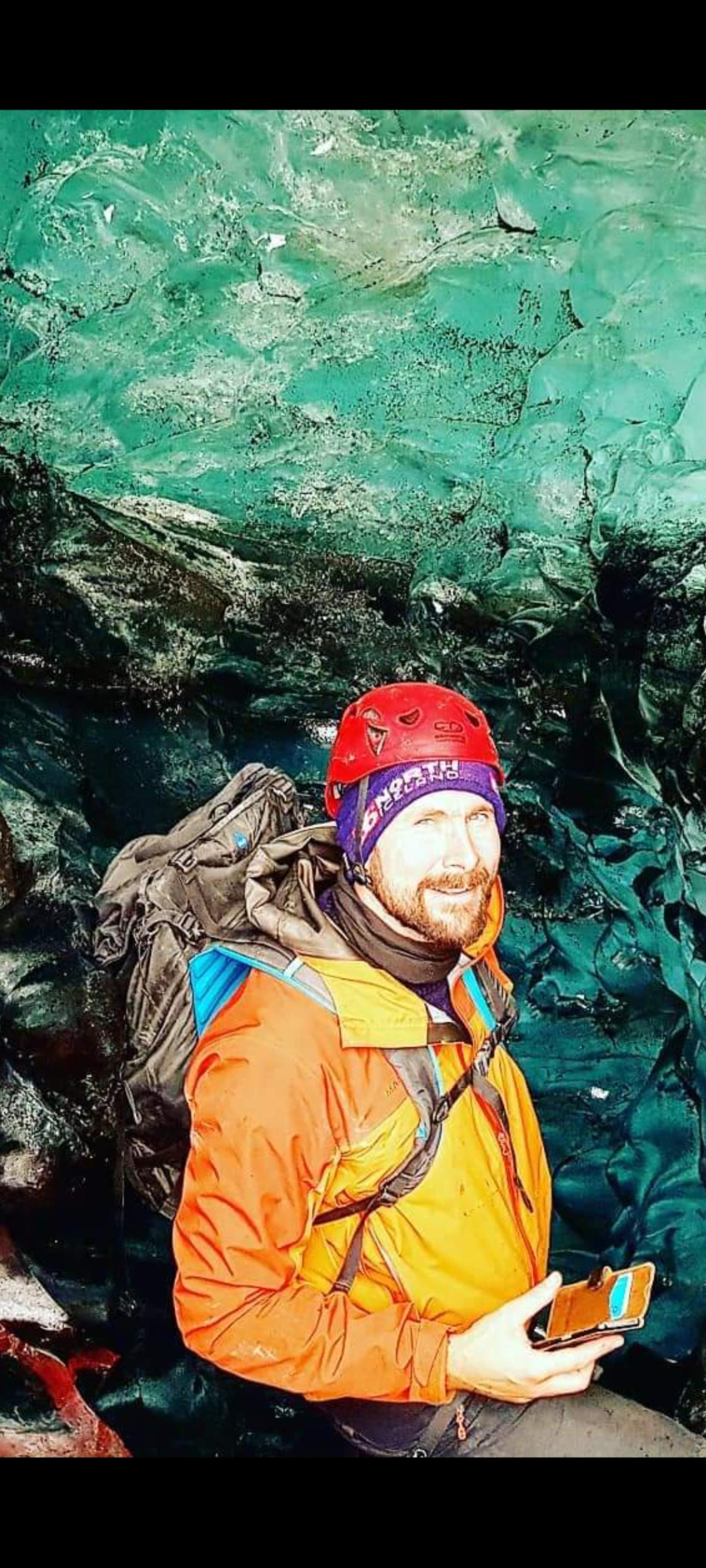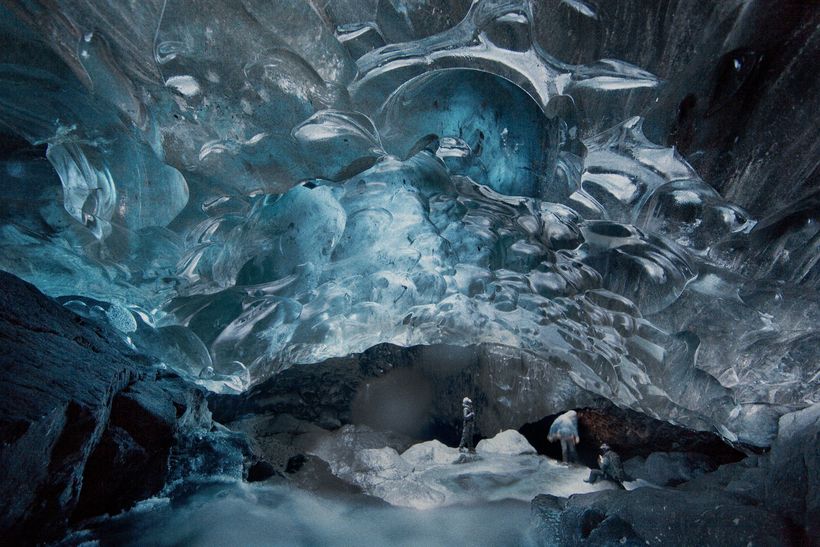Warned of the ice wall just a few minutes before the accident
"I come over there to the man who was found dead under the ice, his feet are sticking out and he's leaning down like that. I take a hook, push the ice off him, and pull him up so he doesn't choke. I perform CPR on the man. Then I get the news that there is an injured woman above and it is his wife," says Birgir Þór Júlíusson, who came to the fatal accident on Breiðamerkurjökull glacier on Sunday.
Júlíusson is one of the three owners of the tourism company Niflheimar, which conducts ice cave exploration in the glacier.
Attempts to revive the man were unsuccessful. He was an American tourist who was there with his pregnant wife who was transported injured by the Coast Guard helicopter to Reykjavík. According to information from mbl.is, the woman is on the road to recovery and the child was not injured.
Júlíusson himself took a group on an ice cave trip on Sunday. He says he noticed the "piece" that collapsed shortly before it happened. The piece, which was an ice arch, he says was above a photo-taking area not far from a path taken during the ice cave tours. He alerted the next guide, who was traveling with another group. This same piece collapsed shortly afterward with the consequences above.
"This is the worst thing that has ever happened to me. I had groups in this cave and I had the last group that day. I saw this piece and stopped at it and didn't like it. I saw that it wasn't far away," he says and adds.
"I figured I'd have to go over there that night and take it down."
Warned abou the piece
Júlíusson says that the piece has fallen in a place intended for photo shoots and it is a little bit off the trail or path that is usually taken on ice cave trips organized by the company.
On Sunday, he decided to direct his group from the shooting location. He judged it too dangerous considering the appearance of the piece.
Instead, he went inside the cave in what he said was a safe area. There he met one of the two guides of Ice Pic Journeys who took care of the group behind Júlíusson’s group.
"I pointed out the piece to him and said it was dangerous. Showed him how to do it and pointed out that it had to be done that evening. I assumed he would let the other guide know and figured it was now underway. I then went up to the glacier with my group."
He says there was sun and mild weather when they got to the glacier and that didn't help. The sun most likely affected the foundations of the walls of the ice cave and the changes were faster.
He said he was on his way down from the glacier with his group when he heard a sound. Had he therefore told the group to wait while he ran back up and into the cave again.
Doesn’t collapse without a warning
When it was time, it became clear to him that the ice arch had fallen at the previously mentioned shooting location. He doubts that the guide he met on his way out of the cave managed to get a message to his partner who was further inside the cave with the group.
He says a piece of ice doesn't collapse without warning.
"The thing is, it starts to sound like a break in the ice as a precursor. That lead-up can be thirty seconds or five minutes or half an hour."
According to him, the guide whom he met had heard the break in the ice and ran towards the piece to warn people. However, he got there too late and looked up at the American man landing under the ice.
Birgir Þór Júlíusson, einn þriggja eigenda ferðaþjónustufyrirtækisins Niflheima ehf. Photo/Sent to mbl.is
It's a great relief that more people were not caught by the ice
Asked how the woman's injuries were treated, he says that there was a doctor in the group who was with the woman. He says meanwhile he focused on resuscitation attempts on the dead. When they failed, he chose to move his body to spare his wife from seeing him.
"Then they start counting in the group and I ask them to count those who are up and down and then all of a sudden four are missing. Then they count better and then there are two missing. I looked over there and immediately judged that whoever was under there was dead."
It has become clear that the registration for the trip was not kept well enough and there was conflicting information about the number of people in the group who were in the cave when the collapse occurred. At first, it was thought that two were missing under the wreckage.
Rescue teams were called out and well over two hundred people were searching when it was dark. Fortunately, there were no more casualties. Rather, the registration for the trip turned out to be incorrect.
Júlíusson says he felt great relief when the last piece of ice was lifted and it turned out that no one was under it.
Júlíusson himself soon started to get his group out of the area shortly after the piece fell. "People were naturally in shock, but everyone showed great sympathy." After he had returned to his group, he went back to the glacier to help.
Is not risking his life unnecessarily
Asked about the discussion that has arisen in the community regarding the dangers of ice cave tours in the summer, he replies that there are risks involved in everything. He considers winter trips no less dangerous because of the unpredictable weather in Iceland in winter.
"No matter what you do. Whether you take people kayaking, boating on Jökulsárlón, diving in Silfra or something else, there is always a risk involved. We have been taking people on cave tours for ten years. A number similar to twice the Icelandic population has come on the trips. This is therefore not a high accident rate. I have thought for many years how one would react if there was an accident on a glacier. It always happens that an accident happens and it happened during the day on Sunday. The same applies to bus trips and everything related to tourism."
Júlíusson says that talking about an ice cave that forms in a riverbed and the ice cave tours that his company offers are different. Rax / Ragnar Axelsson
Not the same phenomenon that Guðmundsson talks about
There are 23 active permits for ice cave tourism on Breiðamerkurjökull. Ice pick journeys and Niflheimar under the Glacier Mice brand are the only ones that offer ice cave tours during the summer. The summer trips have been criticized.
But now there is a report from Magnús Tumi Guðmundsson and Finnur Pálsson and Jón Gauti Jónsson seven years ago about risk assessment due to trips to ice caves for Vatnajökull National Park, where it was pointed out that ice cave exploration in summer is considered very dangerous. Nevertheless, these tours are offered. Why?
"We always think of ice caps where a glacier has made its way and then dried up in the fall and even more in the winter. People have walked in there and shown tourists in the winter. But there are many forms of ice caves. The tours we have been offering are so-called hole tours. We stopped going to these public caves a few years ago due to the excessive number of visitors. It is the caves that the report covers."
He adds that during the so-called hole tours, the company creates access to the caves itself. He says that he and other owners created the access to the cave where the accident happened.
"We have taken people into a smaller gorge on a glacier. There, meltwater and rainwater have eroded the glacier and created caves. We therefore move to a smaller space with blue walls, and this has been called hole culture."
For this reason, he believes that such a case could just as easily have happened during a glacier hike. "We weren't under any roof or anything like that. We were just following a water channel. This is not the same phenomenon that Guðmundsson writes about."
He reiterates that the arch that gave way and fell on the people was at a filming location far from the channel that was followed.
Just as many dangerous pieces in winter
According to Júlíuddon, there had been major changes in the glacier in the last two weeks before the accident. He, along with his colleagues, would often stay late into the night cutting and taking down pieces that were considered dangerous.
"There has been no danger there this summer until now and you naturally follow the changes in pieces," he says and adds.
"There haven't been pieces falling out of nowhere in this cave this summer. I have a wife and three children myself and I'm not risking my life unnecessarily."
He says he has been working on the job for ten years now and has had to take the same amount of pieces down from caves in the winter as in the summer.
"There are natural weather changes throughout the year here in Iceland. You can have 20 degrees below freezing one day in winter and 10 degrees and rain the next. We don't have a climate like in Germany or Canada, where it's either winter or summer," he says.
It has been reported that there will be no more ice cave tours in Vatnajökull National Park at the time. Júlíusson says he has not reached the point where he thinks about the future of the company.







/frimg/1/53/30/1533092.jpg)





